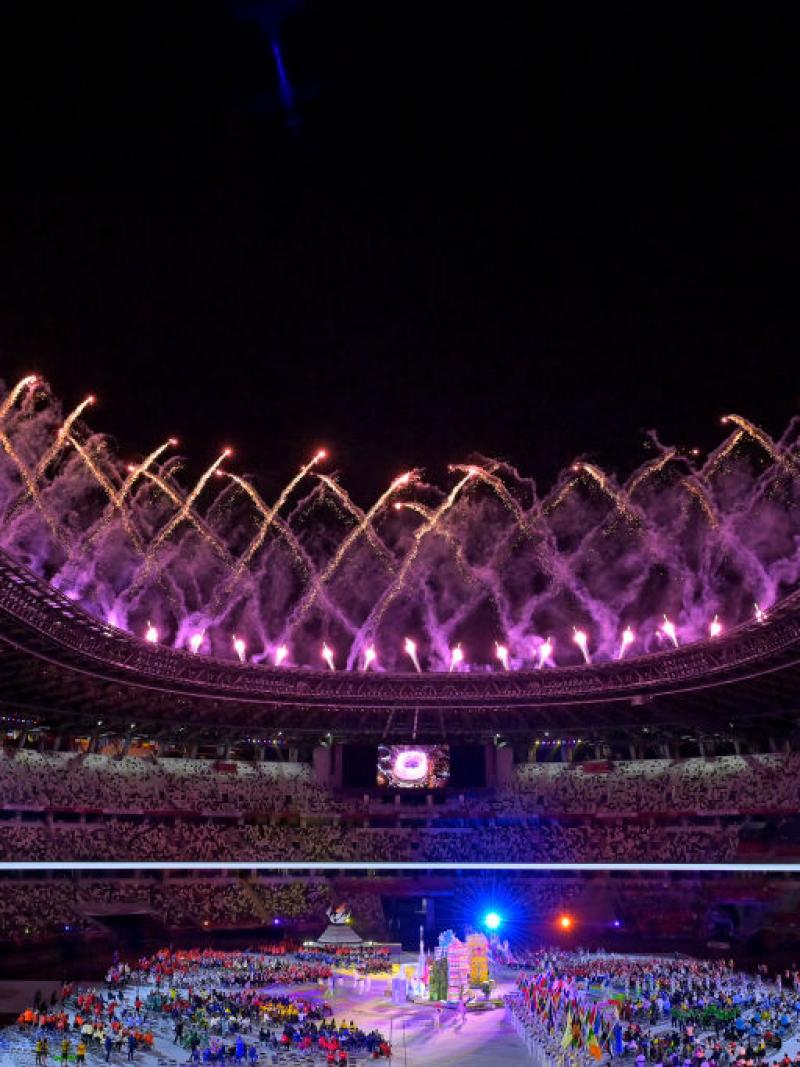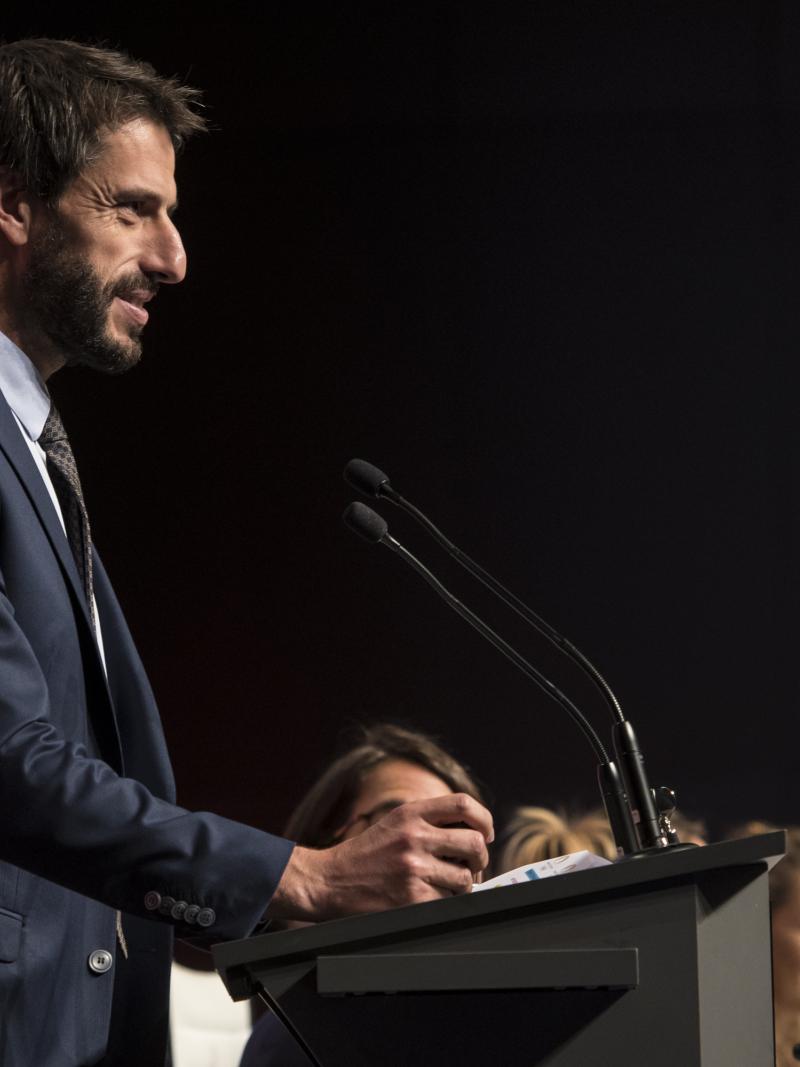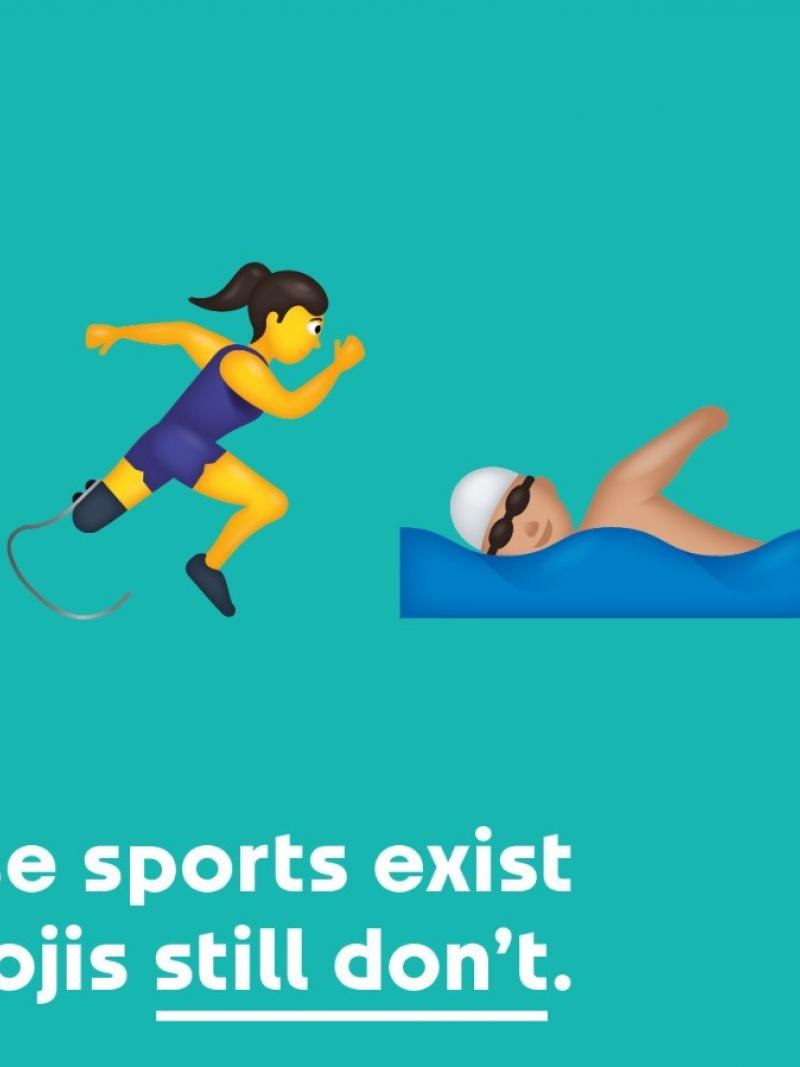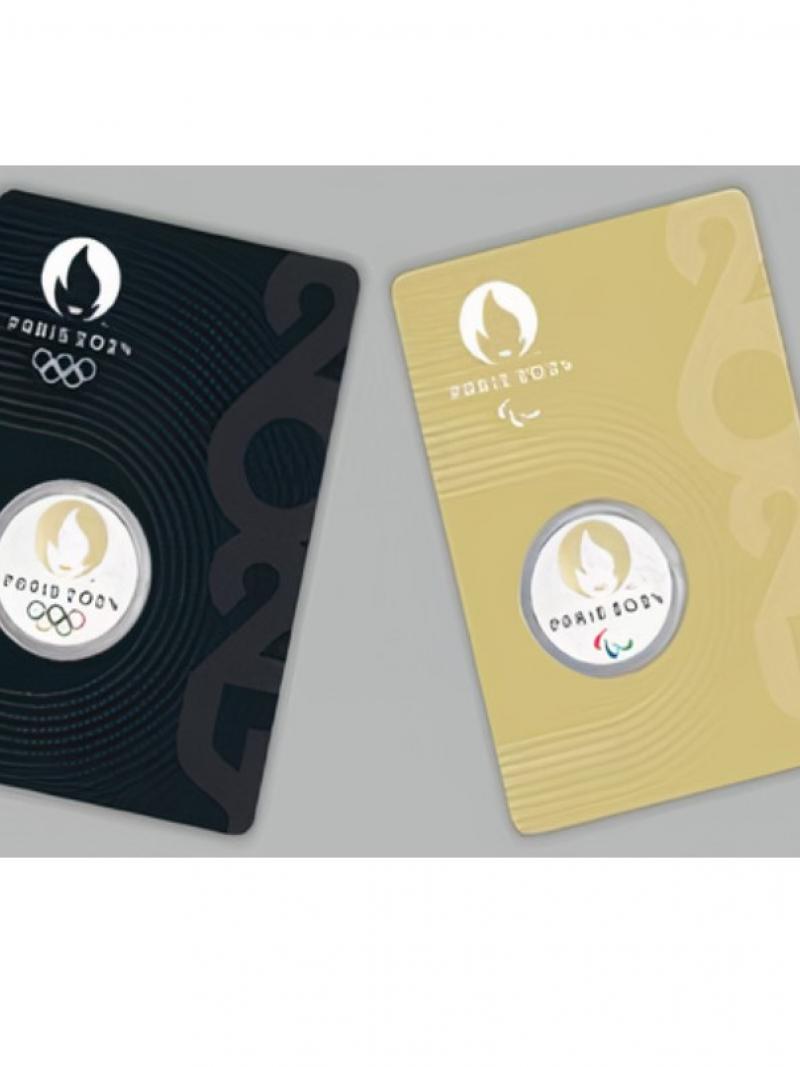Behind the scenes of the Paris 2024 handover dance one year since its making
One week, 128 dancers, nine wheelchairs, sign language and a bionic arm: Learn the story behind the dance that stunned the world 06 May 2022Dancer and choreographer Sadeck Waff waves his hand. As he does, 256 hands go up behind him in perfect unison.
It was one year ago, in May 2021, that Waff first stood in front of 128 people, some professional dancers and some amateurs, including nine people in wheelchairs, 10 people who cannot talk or hear, and a 15-year-old boy with a bionic arm, to create the Paris 2024 handover video.
The video was broadcast during the Closing Ceremony of the Tokyo 2020 Paralympic Games and has generated millions of views. Despite the complexity of the choreography, it took only one week to create - but that week was enough to leave a lasting impression on all involved.
“This one is my favourite. I put it at the top, really the top one of all that I have done because it was not just a show,” Waff said. “It was more than that. It was connecting people who didn’t know each other before, people with disabilities, who themselves they said ‘No, it’s not possible for me’.”
Perfect synchrony
Sadeck Waff has a resume that dazzles with its star power. Known for his geometrical dance style that focuses on precise and synchronised movements, Waff has created choreography for Grammy winners, including Chris Brown and Shakira, competed on France Got Talent three times, getting a Golden Buzzer for his audition in November, and even taught Jennifer Lopez some moves on World of Dance.
A video from the Murmuration series that Waff posted on social media in December 2020 caught the attention of Thierry Reboul, the brand, creativity and engagement executive director at Paris 2024. Reboul then invited him to create something similar for the 2024 Paralympic Games.
“I said, ‘If it’s for Paralympics, for a good message that all people can do exactly the same thing, we need to have people in wheelchairs’. This was the first (point),” Waff said. “And the second, I said, ‘We need people who can dance with their arms, just with the arms, so if you can have people who cannot hear and talk, it would be amazing’.”
Reboul agreed to Waff’s suggestions and asked him to set aside at least two weeks for rehearsals. Waff insisted he only needed one.
On Sunday, he arrived to face his dance troupe. It was the second largest he has ever directed and his first to feature dancers with disabilities.
Half of the 128 dancers were professionals, while the other half were amateurs.
“At first, to be honest, I was really anxious because it was really a challenge for me,” Waff said.
“Before doing the dance, I spent three days by myself, drawing it. I draw all my choreography. I developed a way to write a choreography because all my choreography is just with the arms. You put the arm on ‘X’, you do ‘L’, you do something like this, so I can write it. So the first day I came with my book, with all my drawings. They thought I was crazy.”
Waff started off by doing a short workshop where he taught the dancers how to control their bodies and to understand body lines. On the second day, the group set to tackling the choreography.
While Waff’s confidence soared after the first days, that was not the case for many of the amateur dancers who felt like they could not match up to the professionals next to them.
This included a competitive wheelchair basketball player who approached Waff after the first rehearsal to quit the troupe. But Waff would hear none of it.
“He came to me and said, ‘Sadeck, no. I will stop. It’s too difficult for me. I cannot’,” Waff said. “I said, ‘Eh, no, now you are here, you stay until the end! You stay, you will do everything until the end’.
“I said, ‘Don’t worry. Let’s do tomorrow. Now you will sleep on it, tomorrow you will come back, and you will see, you will do it better. After tomorrow, you will do it better again’.”
Casting aside doubts, the dancers continued to rehearse over the next six days, four hours at a time, and as the week went on, Waff witnessed their transformation.
“I put music on and then all the people were dancing together, talking to each other, even if they didn’t know each other the day before and this has created a lot of beautiful things,” Waff said. “For the deaf people, the people who could hear, they were directing them by counting to help them. There were some little details like these, and it was so beautiful.”
When the Paris 2024 artistic director Reboul came to rehearsals on the third day, he told Waff he almost started crying after watching their performance.
Waff then asked Reboul to stand where he stood – at the front of the group, his back turned to the dancers – while they performed the choreography behind him.
“I said, ‘Just stay here and don’t talk. Just stay like this’. And I counted, ‘Five, six, seven, eight’, and they did all the choreography,” Waff said. “Even if you don’t see all the dancers, you’re full of emotions because you feel them count a little bit, you feel them breathe, you feel them clapping the hands. When you got 128 people behind you, it’s strong. It’s really strong.
“Something happens. I don’t know what, but something happens.”
From rehearsals to the Eiffel Tower
Those powerful emotions were felt by audiences around the world when the video was broadcast during the Tokyo 2020 Closing Ceremony.
As Woodkid’s Prologue track built up, reaching a crescendo, the choreography became more energetic, hands moving to a common beat as the dancers of different backgrounds, genders, ethnicities and physical abilities became one whole for three minutes.
The video was shown at the National Stadium in Tokyo and on television sets around the world. In Paris, it was projected on giant screens set up by the Eiffel Tower. All of Waff’s dancers gathered there to watch it.
“The result of this video was amazing,” Waff said. “The last day, the last take, the videographer, he said ‘Ok, guys, it’s the last one. Let’s give everything’, and everybody was screaming and at the end of the choreography, everybody was crying because that’s the end of something. That’s the end of this whole week, of this whole project, so everybody cried, even me.
“After not seeing each other for three months, we came all together in September. It was like we did this yesterday. They put it on the screen and, the same emotion. It was crazy.”
While Waff could not reveal the details of his future collaboration with Paris 2024, he confirmed that there are new projects in the works.
And after the success of the handover video, he is eager to reach new milestones.
“It was my first big event. It was a big challenge for me and because of all of this, it was my favourite one,” Waff said. “It's my top one. Even if Michael Jackson came back to life and I danced with him, it would not be the same. It’s something stronger than this.”









